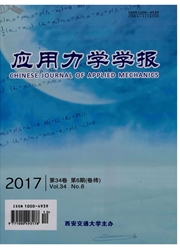

 中文摘要:
中文摘要:
建立了辐射供冷末端设备的[火用]分析模型,通过对比[火用]耗节能率φ,[火用]效率系数 ξ两个参数的变化情况,分析了不同室外环境干球温度及不同供回水温度对辐射供冷末端节能特性的影响。结果表明:供回水温度一定,φ和ξ均随室外干球温度的增大而减小,其中ξ的变化更为显著;室外干球温度一定,φ和ξ均随供回水平均温度的升高而变大,而平均温度不变时,φ和ξ随供回水的温差增大而减小。因此确定辐射供冷供回水温度时,在能达到供冷需求的前提下,应综合当地气候条件等因素,优先考虑采用平均温度高,温差小的供回水方案。
 英文摘要:
英文摘要:
Exergy analysis model of radiant cooling terminal device was built. According to the change of energy saving rate go and exergy efficiency coefficient ξ, the effect outdoor dry-bulb temperature and different supply and return water temperature on energy-saving characteristics of radiant cooling terminal device was analyzed. The results show that when the temperature of supply and return water is constant, go and ξdecrease with the increase of the difference of outdoor dry-bulb temperature, and the change of ξ is more obvious; when outdoor dry-bulb temperature is constant, φ and ~: increase with the increase of average temperature of supply and return water, and if the average temperature is constant, φ and ξ decrease with the increase of the temperature difference of supply and return water. So when determine the temperature of supply and return water of radiant cooling, under the premise of meeting the requirement of cooling, should integrate with the local climate conditions and other factors, choose supply and return water with high average temperature and small temperature difference first.
 同期刊论文项目
同期刊论文项目
 同项目期刊论文
同项目期刊论文
 Second-Order Nonlinearity in Triangular Lattice Perforated Gold Film due to Surface Plasmas Resonanc
Second-Order Nonlinearity in Triangular Lattice Perforated Gold Film due to Surface Plasmas Resonanc Enhancement of red to orange emission ratio of YPO4:Eu3+,Ce3+ and its dependence on Ce3+ concentrati
Enhancement of red to orange emission ratio of YPO4:Eu3+,Ce3+ and its dependence on Ce3+ concentrati 期刊信息
期刊信息
